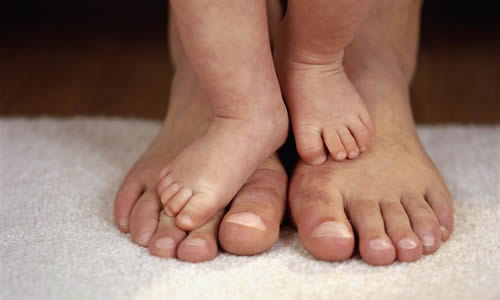Super-Fast, New Laser Treatment Makes Breaking News In Foot Care Therapy
TOENAIL FUNGUS MAY WELL BE A THING OF THE PAST WITH REVOLUTIONARY NEW LASER TECHNOLOGY. PAINLESS THERAPY NEEDS NO ANAESTHETIC, LEAVES NO TISSUE DAMAGE, NO SIDE EFFECTS AND NO HARM TO TREATED NAIL. PROVEN CLINICAL RESULTS REVEAL 100% SUCCESS RATES FOR FULL REVOVERY. PODIATRISTS ARE SET TO REDEFINE CONVENTIONAL THERAPEUTIC APPROACHES IN FAVOUR OF COMPLETE REMEDIAL EFFICACY FROM LASER DYNAMICS.
BACKGROUND
Onychomycosis is a fungal infection of the toe nails and finger nails. Most commonly found in toe nails, onychomychosis causes the nail to become discolored, thickened, brittle and separated from nail bed. Risk of infection increases with age, particularly from around 40 years and with certain medical conditions. Recent studies confirm that the incidence of onychomycosis is on the rise.
CURRENT TREATMENT
Up to now, treatment options for the infection have been various topical and oral therapies (prescribed medication). Often these treatment options demonstrated limited success or caused unpleasant side effects in the gall bladder, gastrointestinal disorders and the risk of liver damage. Many times patients complain of rash, nausea, headaches and other related effects.
ENTER NEW LASER TECHNOLOGY
Toenail Fungus laser treatment is a new breakthrough procedure in treating toenail fungus infection. Latest studies conducted in the US, Canada, and Britain has garnered popularity for foot laser therapy, showing high efficacy rates. Experts in the field agree that new technologies can make a major impact in the lives of people suffering with this embracing condition. Sayed and Rajah Podiatrist are part of the first group of trained and certified 'Fox 1064 laser' Podiatrists in South Africa.
LASER TREATMENT DEPENDENT ON DIAGNOSIS
Each patient's history is different and must be considered in initiating the most appropriate therapy. Some factors are the culture of nail specimens, diabetes, old age, poor circulation, exposure to trauma, and activities contributing to excessive foot sweat. In the proper management of laser treatment, confirmation of fungal infection takes place first - using a method involving PAS Stain. Should this test positive for any one of the four types of onychomycosis, the foot specialist is able to devise a specific regimen of laser treatment for recovery.
HOW THE LASER WORKS







